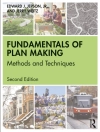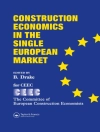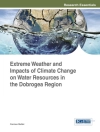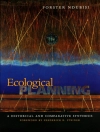In the late 1970s and early 1980s, our nation began to grapple with the legacy of past disposal practices for toxic chemicals. With the passage in 1980 of the Comprehensive Environmental Response, Compensation, and Liability Act (CERCLA), commonly known as Superfund, it became the law of the land to remediate these sites. The U. S. Department of Defense (Do D), the nation’s largest industrial organization, also recognized that it too had a legacy of contaminated sites. Historic operations at Army, Navy, Air Force, and Marine Corps facilities, ranges, manufacturing sites, shipyards, and depots had resulted in widespread contamination of soil, groundwater, and sediment. While Superfund began in 1980 to focus on remediation of heavily contaminated sites largely abandoned or neglected by the private sector, the Do D had already initiated its Installation Restoration Program in the mid 1970s. In 1984, the Do D began the Defense Environmental Restoration Program (DERP) for contaminated site assessment and remediation. Two years later, the U. S. Congress codified the DERP and directed the Secretary of Defense to carry out a concurrent program of research, development, and demonstration of innovative remediation technologies. As chronicled in the 1994 National Research Council report, “Ranking Hazardous-Waste Sites for Remedial Action”, our early estimates on the cost and suitability of existing technologies for cleaning up contaminated sites were wildly optimistic. Original estimates, in 1980, projected an average Superfund cleanup cost of a mere $3.
Table des matières
In Situ Bioremediation Of Perchlorate In Groundwater: An Overview.- Development Of In Situ Bioremediation Technologies For Perchlorate.- Principles of Perchlorate Treatment.- Perchlorate Sources, Source Identification And Analytical Methods.- Alternatives For In Situ Bioremediation Of Perchlorate.- Active Bioremediation.- Semi-Passive In Situ Bioremediation.- Passive Bioremediation of Perchlorate Using Emulsified Edible Oils.- Permeable Organic Biowalls for Remediation Of Perchlorate in Groundwater.- Cost Analysis Of In Situ Perchlorate Bioremediation Technologies.- Emerging Technologies for Perchlorate Bioremediation.
A propos de l’auteur
H. F. Stroo – Dr. Stroo is a Principal Technical Advisor with Hydro Geo Logic, Inc. He has a Ph.D. in Soil Science from Cornell University, and over 20 years of experience in the assessment and remediation of contaminated soil and groundwater. He has provided technical support to SERDP/ESTCP in the development and evaluation of innovative remediation technologies for over 10 years, particularly in the advancement of in situ technologies.
C. H. Ward – Dr. Ward has had a 41-year career in basic and applied research on chemical transport and fate in environmental media and remediation technology development for cleanup of fuel hydrocarbons and chlorinated compounds. He is a science and environmental technology consultant and advisor to government (EPA, Do D, DOE) and industry. He was the Director of the EPA-sponsored National Center for Ground Water Research for 18 years, the Superfund University Training Institute for 8 years, and the Do D-sponsored Advanced Applied (environmental) Technology Development Facility for 7 years. He is the Founding Chair of the Department of Environmental Science and Engineering at Rice University and has published over 200 scientific and technical papers and journal articles and 28 books and monographs on environmental remediation, remediation technology development, and sustainability. Dr. Ward is a registered professional engineer in the state of Texas and a Board Certified Environmental Engineer by the American Academy of Environmental Engineers












